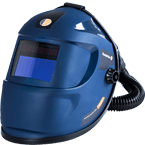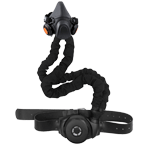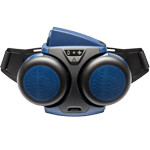We use cookies to make your experience better. To comply with the new e-Privacy directive, we need to ask for your consent to set the cookies. Learn more.

Welding
Welding and welding sites present numerous hazards to health and safety, both for welders and for people in the vicinity. Our mission is to protect you.
Welding fumes/respiratory hazardsThe fumes are composed of very small, solid metal oxide particles that form during the welding process. The majority of the fumes (90-95%) come from the filler metal used, so the chemical content of the welding fumes is the same as that of the filler metal.
Short-term effects of welding fumesThe short-term effects of overexposure to welding fumes include irritation of the eyes, nose and throat, coughing, shortness of breath, bronchitis, increased risk of infection of the respiratory tract, fluid in the lungs and a flu-like illness often called metal fume fever.
Long-term effects of welding fumesWelders’ health is affected in the long term in that they face a 30 to 40 percent increased risk of lung cancer. The exact reason for this is still under careful study worldwide. It may be due to the fact that many welders are heavy smokers and are often exposed to asbestos and/or welding fumes.
RecommendationAlways use respiratory protection equipment suited to the type of welding you are carrying out.
Sparks and splashesWelding normally gives rise to atomised sparks and splashes. If the shielding gas does not have a sufficiently high argon content, larger quantities of sparks and splashes arise and may even be in the form of drops.
If drops, sparks or splashes hit the welder, e.g. during welding from underneath or if the welder is lying down, they may cause burns.
RecommendationUse all-over protective clothing if there is a risk of being hit by large quantities of drops, sparks or splashes.
UV radiationOverexposure to UV radiation affects health, and welders are the largest occupational group exposed to UV radiation.
Short-term effects of UV radiationSkin sunburn. Damage accumulates during the day and does not become visible until a few hours later. Welders’ flash, also known as arc-eye and snow-blindness. This is a painful irritation of the cornea and the conjunctiva (the membrane connecting the eyeball with the inner eyelid). It feels like ’sand in the eye’, and can be felt at the slightest touch. UVB is the principal cause of ’sunburn of the eye’.
The eye is more sensitive than the skin to UV radiation because it lacks the skin’s outer layer and protective pigment. Symptoms appear from six to 24 hours after exposure and usually disappear within the following 48 hours. No permanent damage to the eyes results, unless the exposure has been severe.
Long-term effectsDamage to the retina may ultimately result in loss of vision. This may be caused by UV radiation in people who have had an eye lens surgically removed, for example as a result of a cataract. Such damage to the retina can be prevented by the use of UV-absorbing glasses or the implantation of UV-absorbing lenses. In the normal eye, the retina is protected from UV injury because the vitreous body filters out UV radiation.
Recent research indicates that exposure to UV radiation can adversely affect the immune system.
RecommendationAlways use a welding filter suited to the type of welding being carried out.
Respiratory protection in the highest protection classRespiratory protection is divided into two main groups:
| Filter protection | Breathing apparatus |
|---|---|
| Breathing air passes through a filter which purifies it. (May only be used with normal oxygen content) | Breathing apparatus supplied with compressed air. Portable respiratory devices |
If you are welding in a confined or poorly ventilated space, good filter protection is not sufficient. You also need respiratory protection supplied with compressed air in order not to put your health at risk. Medium-heavy work requires an average air consumption of 50-70 l/min.
How good is my respiratory protection?To state the protective effect of the respiratory protection, you can calculate the protection factor on the basis of measurements. If the concentration of a substance inside the mask is a twentieth of what it is outside the mask, the protection factor of the respiratory protection is 20.
| 1,000 particles/cm3 (outside respiratory protection) |
|
|
|
= Protection factor 20 |
| 50 particles/cm3 (inside respiratory protection) |
The Assigned Protection Factor (APF) is based on measurements made in actual workplaces on actual people at work. This factor is somewhat lower than the Nominal Protection Factor, but the APF corresponds more closely to reality, as it is measured in actual working situations.
Nominal protection factorThe Nominal Protection Factor (NPF) is based on measurements made in the laboratory.


SR 591 WELDING SHIELD combined with half mask SR 900 and remote filter holder SR 905 or with powered fan unit SR 500.

SR 592 WELDING SHIELD WITH AIR CHANNEL combined with powered fan unit SR 500.

SR 900 HALF MASK and SR 905 REMOTE FILTER HOLDER

SR 500 FAN UNIT












